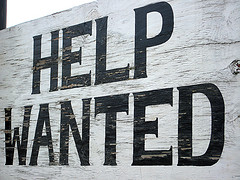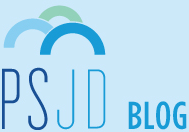by Christina Jackson, NALP Director of Public Service Initiatives & Fellowships

Happy Friday!
Here are the week’s headlines:
- New York City approves $750,000 for legal services program at Rikers Island jail;
- Baylor Law School’s Veterans’ Assistance Clinic receives grant;
- Montana Legal Services Association develops online child support calculator;
- CIA establishes new diversity procedures;
- Massachusetts public defenders attempt unionization again;
- Atlanta non-profit offers legal assistance and citizenship classes to Asian immigrants;
- Clinic changes in Canada still possible despite merger collapse;
- Housing Families (of Malden, Massachusetts) now offering pro bono legal services;
- Law clinics answer the call to help veterans;
- Salt Lake County rethinking indigent defense;
- Lakehead University opens Ontario’s seventh Student Legal Aid Services Society;
- Legal aid in Connecticut to close lobbying arm at State Capitol;
- Legal Aid of Middle Tennessee and the Cumberlands receives grant for SNAP advocacy;
- Funding to help lighten Minnesota public defender caseloads;
- $1 million gift to Rutgers Law School enhances statewide public interest efforts;
- Spotlight on Public Service Servants;
- Super Music Bonus!
The summaries:
July 1, 2015 – “The New York City Council has approved $750,000 in funding for a legal services program at Rikers Island jail, the Legal Aid Society announced in a statement. ‘The funds will allow Legal Aid to support the current staff in the Prisoners Rights Project, whose staff was cut in half over the last two decades,’ Legal Aid Society Attorney-in-Chief Seymour James said on Wednesday. ‘The funding will also allow the program to hire a paralegal case handler, who will be available to directly assist clients.'” (Sputnik)
July 1, 2015 – “For the first time in Baylor Law School history, the State Bar of Texas has awarded a grant to support and foster the ongoing effort of the Baylor Law School Veterans’ Assistance Clinic to provide Texas military veterans free legal counsel. With more than 19,000 veterans residing in McLennan County – adjacent to Fort Hood, the largest U.S. Army installation in the world – there is a great need to provide pro bono legal services to a well-deserving segment of the Central Texas community. (Baylor Media Communications)
July 1, 2015 -“Montana Legal Services Association, with input from the State of Montana Child Support Enforcement Division, has developed an online child support calculator for self-represented litigants. The calculator is intended specifically for cases in which self-represented litigants need to establish original or modified child support orders in parenting plan or dissolution with children cases. The calculator can be found through a link at the www.MontanaLawHelp.org website under the Families and Kids/Child Support topic area or on the www.LawHelpInteractive.org website. Calculator users can compute child support by answering questions about their incomes, parenting schedules and other information in an online interview. Once finished, users can print or email court-ready financial affidavits and/or child support worksheets. Users who create accounts on the Law Help Interactive website can save their answers for later use. Funding for the Montana Online Child Support Calculator was provided through a Legal Services Corporation Technology Initiative Grant.” (State Bar of Montana)
July 2, 2015 – “The CIA is implementing new diversity practices following a report released this week that concluded the agency ‘does not sufficiently prioritize the development of its officers, hold itself accountable for maintaining a diverse and inclusive workplace, or consistently promote an inclusive culture.’ Director John Brennan ordered a set of remedies to be implemented during the next 12 months.” (Government Executive)
July 3, 2015 – “In an attempt to improve working conditions and salaries, [public defender Rachel] Scotch and her fellow employees are attempting to unionize. But it’s no simple undertaking. Public defenders have tried to organize twice before, in 1979 and in 1993, but were rejected by the state labor relations department because of what they say is an oversight in the collective bargaining statute that gives public employees the right to unionize. They are also trying, for the second time, to get a bill passed that would fix the problem. The difficulty in forming a union stems from the fact that the Committee for Public Counsel Services, or CPCS, is not considered a public employer in the executive or judicial branches, whose workers are covered by the state’s collective bargaining statute for public employees. The statute also does not specifically name CPCS as a public employer. For this reason, the state labor relations department has twice ruled that the committee’s employees are not eligible to organize. While they wait in hopes of a legislative change, the public defenders are trying a different tactic, petitioning to organize under a private-sector collective bargaining statute that also covers state employees that are not subject to the jurisdiction of the National Labor Relations Board, including MBTA employees and those who work for the Steamship Authority.” (The Boston Globe)
July 5, 2015 – “For the first time, an Atlanta non-profit will offer free legal help and low cost legal immigration services for Asian people. Asian Americans Advancing Justice—Atlanta offers a legal hotline in five languages, legal help, and ESL citizenship classes, according to AAAJA Executive Director Helen Kim Ho. She has wanted to do this for a long time, and is taking a risk. Ho left her corporate legal career and started the non-profit, then called Asian American Legal Advocacy Center, in 2010. It was ‘the first non-profit law center dedicated to promoting the civil, social and economic rights of Asian immigrants and refugees in the South,’ according to its website. At first she drew no salary and worked from her home. Now she has a staff, an office, and a boatload of awards. The risk is this: costs for the hotline, citizenship classes, and immigration help come from AAAJAs’ existing operating budget. There is no big grant and no big revenue stream to support it, so far.” (Epoch Times)
July 6, 2015 – “After allocating more than $1.1 million to efforts to reform the legal clinic system in the Greater Toronto Area, Legal Aid Ontario has confirmed it’s withdrawing financial support for the project but remains open to changes on a piecemeal basis. ‘We’ve indicated to the project that it is our intention to look at those transformational projects and initiatives that are currently being developed by GTA clinics and if we see a project or initiative that is transformative, that will advance client service and expand client service, then we will use the unspent funds from the GTA transformation project to support that endeavor,’ says Vicki Moretti, LAO’s vice president for the greater Toronto region. The comments follow news that a high-profile effort to merge Toronto-area clinics into a handful of organizations had fallen apart. Last week, Moretti confirmed LAO had withdrawn the funding to support those efforts. ‘In its current form, we will not be [continuing to fund the project],’ she says.” (Law Times)
July 6, 2015 – “Housing Families, a Malden-based agency which aims to end family homelessness in Massachusetts, has recently acquired the Pro Bono Legal Services Program from Tri-City Community Action Program (Tri-CAP), an anti-poverty agency which recently closed. ‘Hosting the program at Housing Families provides families at risk of homelessness with much more than just legal representation — these families now also have the potential to work one-on-one with a case manager to help them get supports in place to minimize the risk of future instability, and the children also have the potential to access our children’s program,’ said Laura Rosi, Housing Families’ director of housing and advocacy. ‘I couldn’t be more proud of the work we’re doing!’ The Pro Bono Legal Services Program will augment Housing Families’ Eviction Prevention Program, which serves to help families keep their housing and avoid becoming homeless in the first place.” (Melrose Free Press)
July 6, 2015 – The National Law Journal has done a nice job summarizing the law school clinics helping veterans. “Today, approximately 50 schools operate clinics or pro bono programs for veterans. Syracuse University College of Law; the University of California at Los Angeles School of Law; the State University of New York at Buffalo Law School; and Pennsylvania State University Dickinson School of Law added clinics this spring. The University of Michigan Law School; Indiana University Maurer School of Law – Bloomington and the University of Denver Sturm College of Law will launch clinics this fall.” Read the full article for more. (National Law Journal)(free subscription required)
July 6, 2015 – “Salt Lake County officials are rethinking how best to provide legal counsel for indigent offenders — a $17 million bill each year. Having a right to counsel is guaranteed by the U.S. Constitution’s Sixth Amendment, so for 30 years, the county has fulfilled that responsibility through a contract with the Salt Lake Legal Defender Association. But there’s been some problems with that contract in recent years, driven largely by a growing disparity between the pay and benefits earned by defense attorneys compared to what prosecutors make in the district attorney’s office. And with the nonprofit Sixth Amendment Center coming out with a study this fall for the Utah Judicial Council on the statewide delivery of indigent defense services, the county is considering three approaches to create more equity in the pay packages of opposing attorneys. One option would be to make the attorneys and staff of the Legal Defender Association employees of the county. Another would be to scrap the contract with the Legal Defender Association and to put the job out for bid. A third choice would be to have the Legal Defender Association contract come up for renewal every year or two, providing a recurring time frame for raising the legal defenders’ pay to match that of district attorneys.” (The Salt Lake Tribune)
July 6, 2015 – “Low-income people living in either Thunder Bay or Fort William First Nation now have access to additional legal services as Lakehead University opens Ontario’s seventh Student Legal Aid Service Society (SLASS). Today, Lakehead Legal Services (LLS) opened its doors to clients.” (Legal Aid Ontario)
July 7, 2015 – “The longest sustained funding crunch in the history of legal aid is about to cost Connecticut’s poor their long-serving lobbyist at the General Assembly: Raphael L. “Rafie” Podolsky, a Yale-educated lawyer who took them as a client 40 years ago, is getting a pink slip. The state’s three major legal-aid groups are closing the Legal Assistance Resource Center of Connecticut, the agency they jointly fund for lobbying and a wide range of education and community outreach on behalf of the poor.” (The CT Mirror)
July 7, 2015 – “Legal Aid Society of Middle Tennessee and the Cumberlands announced today that MAZON: A Jewish Response to Hunger has awarded Legal Aid Society a $13,000 partnership grant to support MAZON’s anti-hunger efforts. This is the second year Legal Aid Society has received the grant funding, which will be used to continue its Supplemental Nutrition Assistance Program (SNAP – formerly known as food stamps) benefits advocacy.” (Clarksville Online)
July 8, 2015 – “An extra $6.5 million in funding will help lighten the caseloads of overworked and underpaid public defenders in the state. The funds are enough to cover the salaries of 36 new public defenders, but Minnesota’s Board of Public Defense, which employs the state’s public defenders, is also struggling with heavy caseloads and salaries that aren’t competitive with the private sector. The agency will meet next week to discuss how to spend the additional funds.” (MPR News)
July 8, 2015 – “The pro bono and public interest initiatives underway at Rutgers law schools in Camden and Newark will expand their reach throughout the state with a $1 million investment to support future practitioners and those unable to afford legal services, thanks to Rutgers Law–Camden alumnus James Maida and his wife Sharon. The Maidas have long supported Rutgers students through generous scholarships. Now with their $1 million gift, the Maida Public Interest Scholars Program will establish the law school as one of the nation’s leading public law schools for public interest law. The gift will benefit Rutgers students while helping the most vulnerable residents in the surrounding communities. The Maida Public Interest Summer Fellowships will pay up to 40 students to work for public interest legal organizations in positions that are normally unpaid, imparting valuable professional experience to the students while advancing the public good. The Maida Post–Graduate Public Interest Fellowship will fund the full-time salary of a selected fellow working in the public interest. These extraordinary funding opportunities will also help attract a cohort of high-achieving prospective law students with a demonstrated commitment to social change.” (Rutgers Today)
Spotlight on Outstanding Public Servants: Bryant Webster, attorney with Stone and Christy P.A. in Black Mountain, North Carolina.
Bryant Webster had no idea he had donated more than 1,300 pro bono hours when he was honored by the state bar association in June. He just thought he was doing his job. Lawyers have an ethical obligation to give back, said the Black Mountain civil litigator who was awarded the North Carolina Bar Association’s 2015 William L. Thorp Pro Bono Award. Webster, 45, practices law at Stone and Christy P.A. in Black Mountain. He has been volunteering with Pisgah Legal Services’ Mountain Area Volunteer Lawyers Program since 1997. Thank you for your service! (Citizen-Times)
Super Music Bonus! https://youtu.be/OAwaNWGLM0c?list=PLFgquLnL59amA7uBKduoqSvYv28x0QexV
 Photo: Brenda Gottsabend – CC License
Photo: Brenda Gottsabend – CC License
